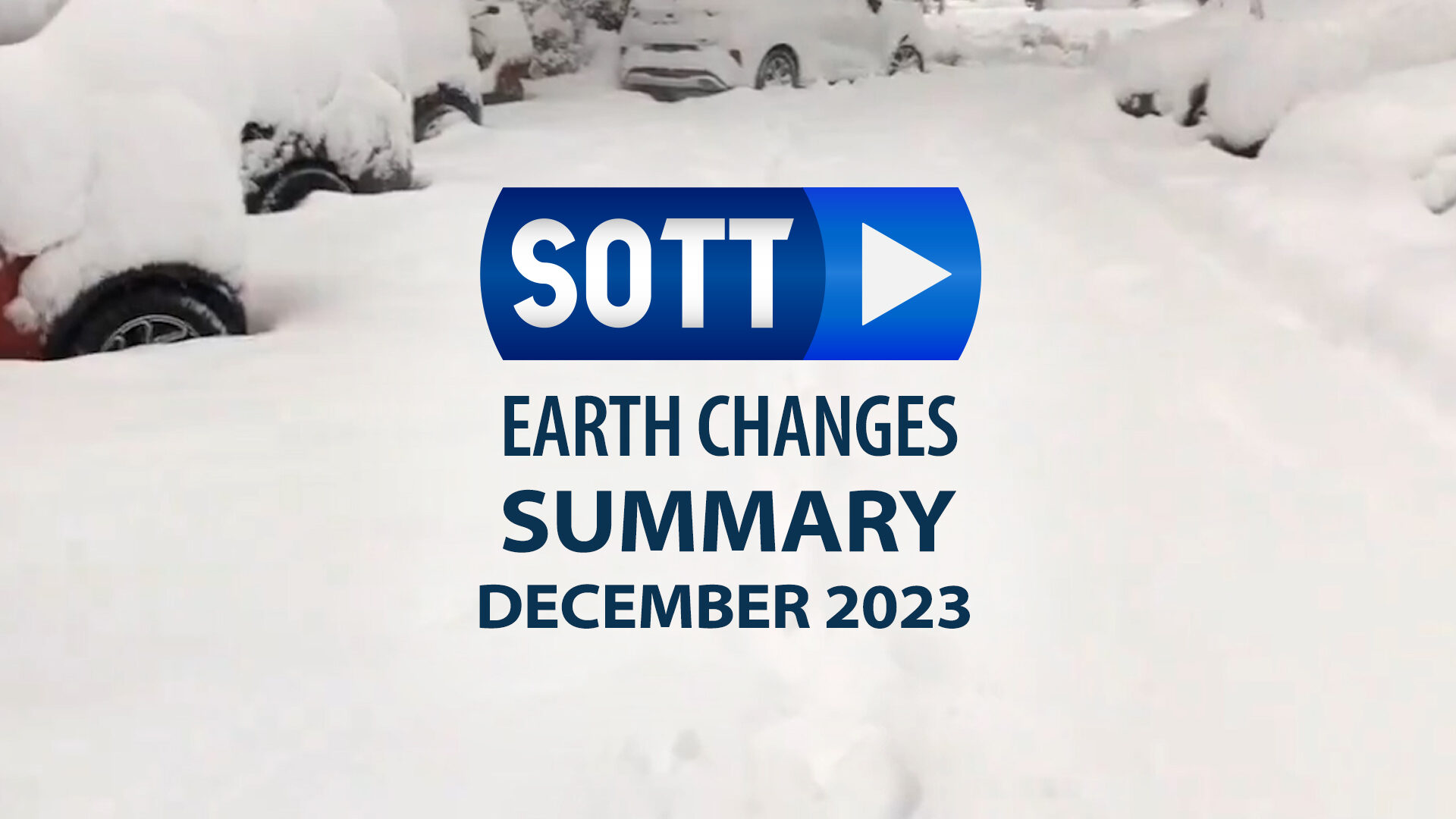A massive solar storm that nearly reached "X-class" status hit Earth on the first day of the month, causing some minor radio and internet disruptions worldwide. This was followed by one of the largest solar flares since 2017 on December 15, which temporarily knocked out radio communications on Earth, affecting even the higher frequencies.
"These impacts were felt from one end of the Nation to the other," said the NOAA.The strong and persistent magnetic storms have also affected the ozone hole in the southern hemisphere, which remains unusually large for this time of year when it normally shrinks. It has remained at a size of about 15 km2 to become the third largest after November 30.
At the same time, record cold weather in the stratosphere produced polar clouds earlier and farther south than usual, with people from all over the Northern Hemisphere reporting or recording sightings. These are extraordinary excursions from the normal polar cloud habitat.
The season for polar clouds usually starts in January. The current cold wave has given the season an early start and could herald many more PSCs in the weeks ahead.Furthermore, on December 25, BAM Weather reported that "A textbook sudden stratospheric warming event looks to be unfolding,"
Sudden stratospheric warmings involve a rapid and dramatic rise in temperature — as much as 80 degrees Fahrenheit — within the polar stratosphere, together with a disruption in the stratospheric polar vortex. That disruption typically either splits the vortex or pushes it southward, along with associated Arctic air masses". And it's the splitting of the polar vortex that delivers the blast of Arctic air to the Lower 48 region.So get your big jacket ready.
[...]"It appears as if there could be a legitimate risk developing for a mid to late Jan major blast of Arctic air and stormy weather," BAMWX noted.
In this regard, the Russian Academy of Sciences interviewed Andrey Fedotov, a top polar scientist whose studies predict a serious global cooling beginning in 2030-2035. According to Fedotov, "the warming is about to end" and "the Earth is about to enter an 'ice age.'
RAS: So the Ice Age has already arrived, but we haven't felt it yet?Here are the top freezing events for December 2023:
Fedotov: No. When it comes, you will feel it immediately.
[...] RAS: And what should be done now? Prepare felt boots, warm clothes, heaters?
Fedotov: "I would start with food. Hungry-in felt boots won't last long.
- Southern Germany - Munich hit with record-highest snowfall for December.
- Siberia - Sudden decrease up to minus 69 Fahrenheit.
- Moscow - blizzards blanketed Moscow in record snowfall.
- Kara-Kulja, Kyrgyzstan - 51 inches of snow.
- South Korea - record-breaking cold and snowfall.
- Northern Japan - record-high snow - 28 inches in 24 hours.
- Northeast US - Unusual cold temperatures and snowfall causing widespread power outages.
- East and Sothern China - deep freeze triggers extreme snowfall.
- Hanang District, Tanzania - 65 fatalities after heavy overnight rain.
- Washington and Oregon - Atmospheric river dumps record rain - 8.6 inches in 24 hours.
- Queensland, Australia - 7 feet of rainfall dumped from Cyclone Jasper.
- Bahia Blanca, Argentina - 13 dead after heavy rainfall, and hurricane-like winds.
- Tamil Nadu, India - 3 feet of rainfall in 24 hours.
- East Coast states of Malaysia - Heavy floods displaced 25,000 people.
- Southern Thailand - Severe flooding displaced 10,000.
Also, seismic activity on Iceland's Reykjanes peninsula erupted spectacularly after weeks of unrest. A fissure 2.5 miles long appeared on the surface and spewed a wall of lava up to 100 feet high. Authorities evacuated the nearly 4,000 residents of the fishing town of Grindavík but said the eruption posed no threat to life or travel. This type of eruption does not usually produce much ash, but experts said there could be some impact on air travel.
All this and more in our SOTT Earth Changes Summary for December 2023:
Or watch it on Rumble.
To understand what's going on, check out our book explaining how all these events are part of a natural climate shift, and why it is taking place now: Earth Changes and the Human-Cosmic Connection
Check out previous installments in this series - now translated into multiple languages - here.




Reader Comments
yes I know there is vimeo and others. 2me utube was just very convenient for a download.
and by this dead link I feel pranked, don't you people know the status of your own accounts?
SOTT Focus:SOTT Podcast: Killing Children - Israel Uber Alles
What does it take to be able to kill a child, or a hundred children? Or to burn them alive and tear their bodies to shreds. Day in and day out. Could you do it? Some people don't give it a thought...Review: "Earth Changes and the Human-Cosmic Connection"
If you ever wanted to read a treatise about the importance of seeing reality over illusion, seeking the truth over lies, then this book is a must read. Jet Stream meanderings, Gulf Stream....
"The full fury of winter weather warfare is being released on major portions of the US and Russia. Was this the plan that was hatched at the recent COP 28 global climate conference? Chemical ice nucleation cloud seeding operations are wreaking havoc around the world on populations and the environment alike. Global conflict is being fomented as the total desperation of the matrix manipulators spirals completely out of control. How long till the links in the chain of our current paradigm shatter? ..." - Dane Wigington